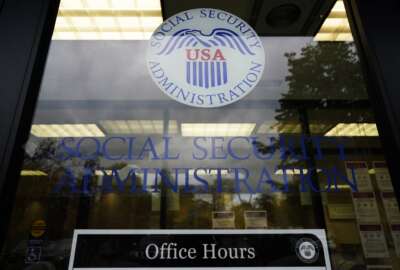Census director wraps up 2010 count, looks ahead
With the 2010 census winding down its more public face, officials are double-checking their work as the bureau looks toward the final decennial population count...
wfedstaff | June 3, 2015 8:20 am
By Meg Beasley
and Max Cacas
Reporter
Federal News Radio
The director of the Census Bureau, Robert Groves, used his monthly progress report on the 2010 census not only to outline work currently underway to double-check the decennial population count, but also to offer some ideas on how future counts might take place.
As the most public phases of the census are winding down, Groves offered a sneak peak at some potentially good news.
“Seventy-two percent of the occupied households, roughly, returned the mail questionnaire, and this was a glorious success given that all survey professionals expected a lower rate,” says Groves during a speech at the National Press Club in Washington Wednesday.
Groves also says that except for some follow up visits, Census workers have essentially completed the task of “knocking on 47-million doors.”
As the current census enters its final stages, Groves already is looking ahead to the 2020 edition with an eye toward increasing options and efficiency, including considering how best to integrate the Internet and handheld computers.
Groves believes the 2020 census likely will be a combination of techniques and technologies, some refined from this year’s census and some that have not even been developed.
“The vision that we are building for the 2020 census is that it will be a lot of different things. If we are really smart we’ll chose the number of different ways to do that so the overall percentage of people that do it without us having to send someone to their door goes up,” Groves says.
The bureau says the largest cost of any census is sending enumerators door-to-door to conduct interviews and gather information from residents who did not mail back their census forms. This year enumerators made door-to-door follow-up visits to 48 million housing units. On average, interviews cost $57 per household or $25 per person.
In-person interviews can incur other costs; this year more than 500 census takers reported incidents of violence or assault. Encounters ranged from duck attacks to attempted shootings.
The bureau is looking at integrating Internet technology and handheld computers to further streamline the process. Groves says the 2020 census must have an Internet option, but that he does not expect an Internet option alone to increase participation.
Over the last several years, another hope for reducing the costs of the 2010 census focused on automating many of the important public and back-office functions of the data collection phase of the census. Key to the automation project was small, hand-held computers that were to have been used in the field for two census tasks. But the software systems to which the handhelds were to report their data never got out of their debug phase because of all the problems. The handhelds were used only for the easier address canvass phase, and printed forms were used for data collection.
When asked if his statement that the Internet might be part of the next population count, whether a hand-held computer might also be a part of the enumerator’s tool kit in the future, he says that right now, he and his staff are looking at every possible opportunity to reduce the cost of the census count, and believe that combining some back-office functions in the planning phase could provide some savings in the long term.
Groves believes that “it is quite likely that there will still be a face-to-face component to the 2020 census. All the neat ideas of technology that I love and cherish and will push, have weaknesses for certain parts of the population. 2020 is 10 years out, and the world will change. Hand-held computers are very attractive because they allow you to monitor work, to transmit completed work, to check work as you’re getting it done. Almost all our surveys are using computers for face-to-face interviews. I think it’s likely the 2020 census will have a device that has a lot of intelligence attached to it, and will assist the interviewer in doing their work. Whether we’ll call it a handheld or not, it may be a wearable device, it may just look like a jacket. We don’t know what it will look like.”
And then, joking to the assembled journalists and his staff, he concluded, “A hand-held is going to be so 2010, by the time we get to the 2020 census, we’re going to have a different word for it, but it will be there.”
Meg Beasley is an intern with Federal News Radio
Copyright 2010 by FederalNewsRadio.com. All Rights Reserved.)
Copyright © 2024 Federal News Network. All rights reserved. This website is not intended for users located within the European Economic Area.





